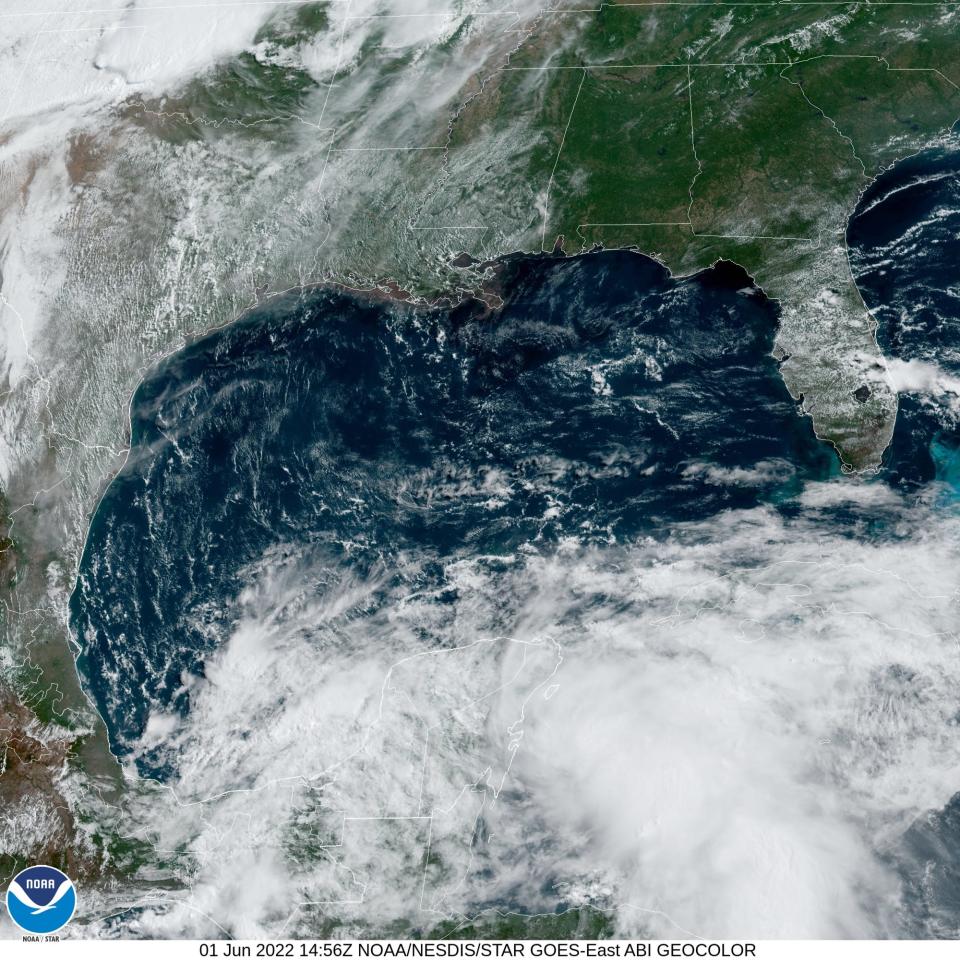Lots of rain could fall over Lake O this weekend. What does that mean for discharges?
The wet season officially is upon us with a tropical system expected to bring a deluge of rainfall to South Florida this weekend. Current forecasts show parts of Lake Okeechobee, Florida's largest freshwater lake, could see as much as 6 inches of rain.
The question: How will so-called “Potential Tropical Cyclone One” impact how Lake O is managed?
The U.S. Army Corps of Engineers and state water managers have agreed to close all of the federal lock and dam structures around Lake O starting Friday afternoon, according to Corps spokesperson Erica Skolte.
That includes the Port Mayaca Lock and Dam in Martin County and the Julian Keen Jr. Lock and Dam on Lake O's west side, Skolte said.
Storm: Tropical depression 70-80% likely from Gulf storm; 2-4 inches of rain is primary threat
Manatees: Florida manatee die-off: Federal wildlife officials to update sea cow habitat designation
Sweet money: No more sugar industry donations to politicians? That's what a new advocacy campaign wants

The Corps is still targeting a weekly average rate of 646 million gallons per day to the Caloosahatchee River through the W.P. Franklin Lock and Dam, Skolte said. There will be no Lake O discharges into the St. Lucie River out of the St. Lucie Lock and Dam
But the Corps has a few options during the storm and may make adjustments to discharges depending on how much rain falls and where it falls, according to Skolte.
For one, the C-44 Canal — which connects Lake O to the St. Lucie River — is sitting at about 1½ inches lower than the lake.
It’s possible canal operators may have to open the St. Lucie Lock temporarily to manage the canal level “if there is a cell right near the (lock) that drops a significant amount of rain during the storm in that location,” Skolte said. That would be basin runoff, not lake water, heading into the river.
"We will be monitoring closely ... if anything changes following the storm," Skolte said.
Fixes to the Herbert Hoover Dike — the 143-mile earthen dam around Lake O that protects South Florida from flooding — are 94% complete, Lt. Col. Todd Polk said during a May 27 media call. It's expected to be finished this winter.
Tropical Storm Watch for Lake O
The National Hurricane Center put Lake O and most of coastal Florida under a tropical storm watch Thursday night.
Lake Okeechobee's elevation sits at nearly 12 feet, 7 inches above sea level, according to Corps data Thursday. That's about 2½ inches lower than this point last year, and 6½ inches lower than the average elevation between 1965 and 2007.
Still, the lake is sitting about an inch higher than the Corps' preferred level of 12½ feet by June 1, the official start of the Atlantic hurricane season.
The agency uses that threshold as a soft target to make room on the lake for summer rainfall. It's also the ideal elevation for boater navigation, and the lake historically has been at this level about 35% of the time.
The region surrounding Lake O, including southern Okeechobee County and western Martin County, could see between 4 and 6 inches of rainfall with some areas as high as 10 inches through Sunday morning, according to Brendan Schaper, a meteorologist at the National Weather Service in Melbourne.
There's still "a lot of uncertainty" Schaper told TCPalm Thursday, and the storm was disorganized.
If the storm tracks north, it could bring the increased rainfall with it, Schaper said. That would mean more rain over Lake O. If the storm tracks further south, the region will be spared the worst of the rainfall.
The last time the Corps discharged Lake O water into the St. Lucie River was March and April of last year, ahead of the hot, wet and slimy toxic algae season.
Max Chesnes is a TCPalm environment reporter focusing on issues facing the Indian River Lagoon, St. Lucie River and Lake Okeechobee. You can keep up with Max on Twitter @MaxChesnes, email him at max.chesnes@tcpalm.com and give him a call at 772-978-2224.
This article originally appeared on Treasure Coast Newspapers: As a storm heads toward Florida, could Lake O discharges change?

